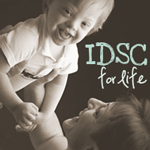Well, I found out that the Duke University study actually is completed now. So, I searched for the abstract and will paste it here:
Source: Duke University Eye Center, Durham, North Carolina 27710, USA. yanov001@mc.duke.edu
BACKGROUND: Children with Down syndrome (DS) have an increased prevalence of ocular disorders, including amblyopia, strabismus, and refractive error. Health maintenance guidelines from the Down Syndrome Medical Interest Group recommend ophthalmologic examinations every 1 to 2 years for these children. Photoscreening may be a cost-effective option for subsequent screening evaluations after an initial complete examination, but no study has evaluated the accuracy of photoscreening in children with DS. The purpose of this study is to determine the sensitivity, specificity, and positive and negative predictive values of photoscreening in detecting treatable ocular conditions in children with DS.
METHODS: Photoscreening and complete ophthalmologic evaluations were performed in 50 consecutive 3- to 10-year-old children with DS. Sensitivity, specificity, and positive and negative predictive values were calculated with the use of ophthalmologic examination findings as the reference standard.
RESULTS: Most children were able to complete photoscreening (94% with Medical Technology and Innovations [MTI] and 90% with Visiscreen OSS-C [VR]). Many children had an identified diagnosis on ophthalmologic examination (n = 46, 92%). Of these, approximately one-half (n = 27, 54%) had one or more condition(s) requiring treatment. Both the MTI and VR photoscreening devices had a sensitivity of 93% (95% confidence interval 0.76-0.99) for detecting treatable ocular conditions. The specificities for the MTI and VR photoscreening were 0.35 (0.18-0.57) and 0.55 (0.34-0.74), respectively.
CONCLUSIONS: Photoscreening is sensitive but less specific at detecting treatable ocular conditions in children with DS. In specific instances, the use of photoscreening in the DS population has the potential to save time and expense related to routine eye examinations, particularly in children with a normal baseline comprehensive examination.
Copyright © 2010 American Association for Pediatric Ophthalmology and Strabismus. Published by Mosby, Inc. All rights reserved.

Tweet























0 comments:
Post a Comment